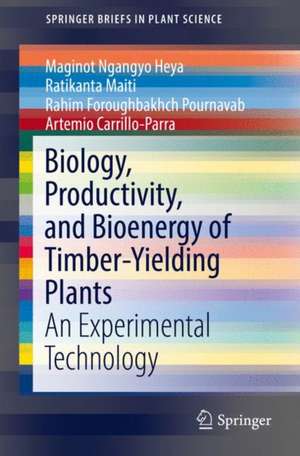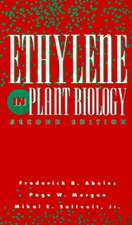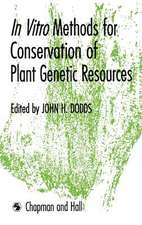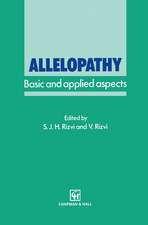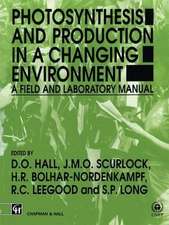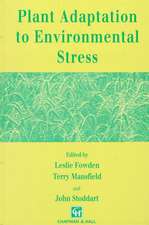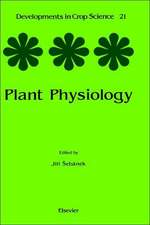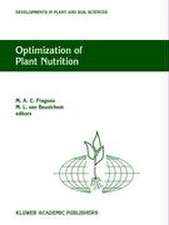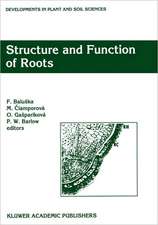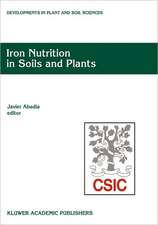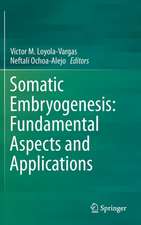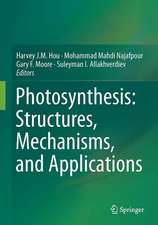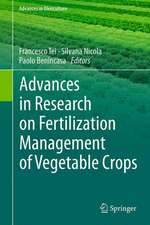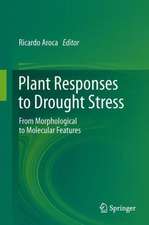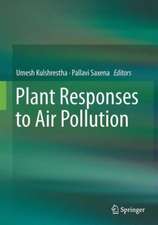Biology, Productivity and Bioenergy of Timber-Yielding Plants: An Experimental Technology: SpringerBriefs in Plant Science
Autor Maginot Ngangyo Heya, Ratikanta Maiti, Rahim Foroughbakhch Pournavab, Artemio Carrillo-Parraen Limba Engleză Paperback – 12 ian 2018
Face to the current global energy crisis, there is an urgent necessity of searching for alternatives to fossil fuels, and this book shows how timber is a promising resource for sustainable energy production. Northeast Mexico represents an important forest resource to satisfy the needs of the population in these areas. In order to harness these forest resources, technology for exploring these valuable resources must be developed. These technologies (with special reference to biology and wood technologies) are available in scattered form in a few books but there is no central, comprehensive source for practical forest scientists for adopting efficient forest management, practice, and exploration.
This book deals with the characterization of the vegetation, morphology, phenological development, biomass production (leaf, litter, wood), and bioenergy of some timber-yielding species of Northeast Mexico, which will serve as a guide to study timber-yielding plants in the native vegetation of Tamaulipan thornscrub and experimental plantations. This includes morphology, vegetation cover, biomass production in terms of volume leaf biomass, litter, and volume of fire wood and timber. Special emphasis is given to the estimation of bioenergy products and chemical composition (Ph, extractable lignin, and inorganic elements). Large variations exist in vegetation cover, morphology, phenological development, biomass production of leaf and litter, volume of wood and various variable of bioenergy products among the selected species. The maximum production was found in summer and the volume of the harvestable timber was obtained in experimental plantations. This book, therefore, will serve as a practical handbook to characterize timber-yielding plants, which will help to efficiently manage forestry resources.
Din seria SpringerBriefs in Plant Science
-
 Preț: 345.63 lei
Preț: 345.63 lei -
 Preț: 379.09 lei
Preț: 379.09 lei -
 Preț: 379.09 lei
Preț: 379.09 lei -
 Preț: 375.23 lei
Preț: 375.23 lei -
 Preț: 377.18 lei
Preț: 377.18 lei -
 Preț: 376.80 lei
Preț: 376.80 lei -
 Preț: 378.71 lei
Preț: 378.71 lei -
 Preț: 379.09 lei
Preț: 379.09 lei -
 Preț: 376.59 lei
Preț: 376.59 lei -
 Preț: 374.30 lei
Preț: 374.30 lei -
 Preț: 377.73 lei
Preț: 377.73 lei -
 Preț: 381.59 lei
Preț: 381.59 lei -
 Preț: 375.07 lei
Preț: 375.07 lei -
 Preț: 349.10 lei
Preț: 349.10 lei -
 Preț: 479.67 lei
Preț: 479.67 lei -
 Preț: 441.47 lei
Preț: 441.47 lei -
 Preț: 375.45 lei
Preț: 375.45 lei -
 Preț: 376.59 lei
Preț: 376.59 lei -
 Preț: 377.73 lei
Preț: 377.73 lei -
 Preț: 378.71 lei
Preț: 378.71 lei -
 Preț: 376.22 lei
Preț: 376.22 lei - 15%
 Preț: 460.75 lei
Preț: 460.75 lei -
 Preț: 376.80 lei
Preț: 376.80 lei -
 Preț: 410.77 lei
Preț: 410.77 lei -
 Preț: 376.22 lei
Preț: 376.22 lei
Preț: 379.86 lei
Nou
Puncte Express: 570
Preț estimativ în valută:
72.70€ • 75.61$ • 60.01£
72.70€ • 75.61$ • 60.01£
Carte tipărită la comandă
Livrare economică 15-29 aprilie
Preluare comenzi: 021 569.72.76
Specificații
ISBN-13: 9783319617978
ISBN-10: 3319617974
Pagini: 141
Ilustrații: VIII, 144 p. 70 illus., 65 illus. in color.
Dimensiuni: 155 x 235 mm
Greutate: 0.22 kg
Ediția:1st ed. 2017
Editura: Springer International Publishing
Colecția Springer
Seria SpringerBriefs in Plant Science
Locul publicării:Cham, Switzerland
ISBN-10: 3319617974
Pagini: 141
Ilustrații: VIII, 144 p. 70 illus., 65 illus. in color.
Dimensiuni: 155 x 235 mm
Greutate: 0.22 kg
Ediția:1st ed. 2017
Editura: Springer International Publishing
Colecția Springer
Seria SpringerBriefs in Plant Science
Locul publicării:Cham, Switzerland
Cuprins
Chapter1.Timber yielding plants of the Tamaulipan thorn scrub: Forest, Fodder and Bioenergy Potential.- Chapter2.Research methods of timber yielding plants (in the example of boreal forests).
Notă biografică
Ratikanta Maiti, Facultad de Ciencias Forestales, Universidad Autónoma de Nuevo León, Linares, Nuevo León, Mexico
Ratikanta Maiti, Ph.D., D.Sc., is a renowned botanist of international repute with specialization in crop physiology and botany. He worked for nine years as a senior botanist in Jute Agricultural Research Institute, Barrackpore (I.C.A.R.), Kolkata, West Bengal, and for 10 years as a senior plant physiologist in ICRISAT, Patancheru, A.P., India. Then he worked as Senior Professor and Senior Research Scientist (CONACYT, Mexico, for 18 years) at two universities in Mexico for 20 years. During his scientific career, he has developed innovative techniques for the screening of salinity and drought of several crops. As author of more than 30 books, he has won several international awards such as international scientist award offered by IBC, Cambridge and Ethnobotanist Award 2003 sponsored by Friends University, U.S.A. and U.N.D.P. and gold medal for India 2008 offered ABI.
Magnot Ngangyo Heya, Departamento de Botánica, Facultad de Ciencias Biológicas, Universidad Autónoma de Nuevo León, San Nicolás de los Garza, Nuevo León, Mexico
Rahim Foroughbakhch Pournavab, Departamento de Botánica, Facultad de Ciencias Biológicas, Universidad Autónoma de Nuevo León, San Nicolás de los Garza, Nuevo León, Mexico
Artemio Carrillo Parra, Facultad de Ciencias Forestales, Universidad Autónoma de Nuevo León, Linares, Nuevo León, Mexico
Textul de pe ultima copertă
Face to the current global energy crisis, there is an urgent necessity of searching for alternatives to fossil fuels, and this book shows how timber is a promising resource for sustainable energy production. Northeast Mexico represents an important forest resource to satisfy the needs of the population in these areas. In order to harness these forest resources, technology for exploring these valuable resources must be developed. These technologies (with special reference to biology and wood technologies) are available in scattered form in a few books but there is no central, comprehensive source for practical forest scientists for adopting efficient forest management, practice, and exploration.
This book deals with the characterization of the vegetation, morphology, phenological development, biomass production (leaf, litter, wood), and bioenergy of some timber-yielding species of Northeast Mexico, which will serve as a guide to study timber-yielding plants in the native vegetation of Tamaulipan thornscrub and experimental plantations. This includes morphology, vegetation cover, biomass production in terms of volume leaf biomass, litter, and volume of fire wood and timber. Special emphasis is given to the estimation of bioenergy products and chemical composition (Ph, extractable lignin, and inorganic elements). Large variations exist in vegetation cover, morphology, phenological development, biomass production of leaf and litter, volume of wood and various variable of bioenergy products among the selected species. The maximum production was found in summer and the volume of the harvestable timber was obtained in experimental plantations. This book, therefore, will serve as a practical handbook to characterize timber-yielding plants, which will help to efficiently manage forestry resources.
Caracteristici
Analyzes forest resources as potential bioenergy sources Provides the first comprehensive source on adopting efficient forest biotechnological practices Includes color illustrations alongside the latest research
